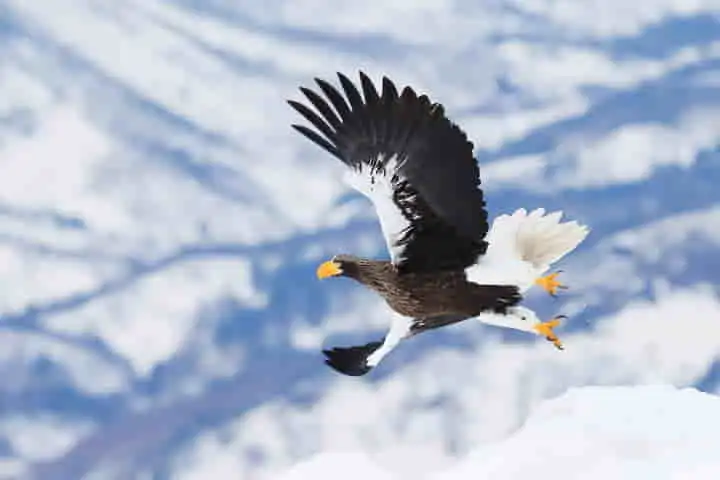A bird has set the hearts of all the ardent avian lovers in Canada’s east coast Nova Scotia aflutter. The reason being that this Steller’s sea eagle or Haliaeetus pelagicus has come thousands of miles away from its natural home in Asia, reports an article in smithsonianmag.com.
The majestic raptor was spotted recently in Nova Scotia on November 3 according to a report in New York Times.
This bird which is found in Asia, specifically in Japan, Korea, China and Eastern Russia has been spotted hundreds of miles away from its home in places as far as Texas and Alaska. It was seen in the US in Denali highway in Alaska in August 2020 while it was spotted in New Brunswick and Canada’s Quebec in July 2021.
Also read: Scientists puzzled by asexual reproduction among condor predators
Phil Taylor, a biologist at Acadia University was the first to see the bird in Nova Scotia, when he was looking for the ducks in Falmouth. What drew his attention were the distinctive features of the bird — yellow beak, unique white patterning on its wings, and large white tail feathers, all of which made it easy for the Taylor to recognise it.
Talking to New York Times Taylor, who is a bird migration expert, remarked: "I knew exactly what it was, immediately. I couldn't believe it. Something like this is just one in a million."
Other birders were informed by Taylor motivating them to go to the area to look for the bird, including wildlife photographer Jason Dain. A nice group of 40 of them gathered to check the raptor.
Expressing what he felt, Dain told CBC News: "Mind blown, gobsmacked … there's all kinds of words. It's a dream bird for a birder or to see, especially here in Nova Scotia."
The fraternity of birders is convinced that the Nova Scotia eagle is the one which was sighted in other North American parts and this is confirmed by the unique white markings on its wings. Pictures clicked at different sites confirm this through the wing markings.
It is clear that the eagle is lost but it is not uncommon for birds to become vagrants. The situation of vagrancy arises when a bird goes off its track or course which is possible because of an error in navigation or due to extreme weather patterns. As per New York Times, vagrancy also helps in enlarging the geographical area range for migration for the birds – a distinct advantage given the changes in the habitats due to climate changes.
Also read: Like humans, flamingos dye their feathers to look good and attract mates
The bird going off the course is usual as there have been recordings of albatrosses living for decades outside their native range. This is appealing to birders since they get to chance upon and observe some rare bird which can’t be seen locally.
Scientists feel that this lone raptor may join native bald eagles to migrate along the coastline and find way to its usual track in north eastern Asia. There are chances that the bird may not do this and brave the brutal winter season of Nova Scotia, and it is possible that in this effort, it may lose its life.
Avian expert at Manchester Metropolitan University, Alexander Lees on this issue stated: "It's like an avian soap opera. We're all rooting for it. Will it make it home? Or is it doomed to never see another species of its own in its lifetime?"




















